Exact time Titan sub’s oxygen will run out as Victor 6000 robot joins search
The US Coastguard has made a stark prediction as a cutting-edge robot joins the frantic race to rescue the Titan submersible.
The US Coastguard has made a stark prediction about the exact time that the missing Titan submersible’s oxygen supply will run out.
As the race against time to find those trapped on the missing vessel becomes increasingly desperate, a US Coastguard spokeswoman said the Titan’s oxygen supply is expected to run out at 9.08pm AEST on Thursday.
Officials are insisting the operation is still a rescue mission and the world’s most advanced underwater search equipment vehicles have been deployed to find the OceanGate tourist vessel in the depths of the Atlantic.
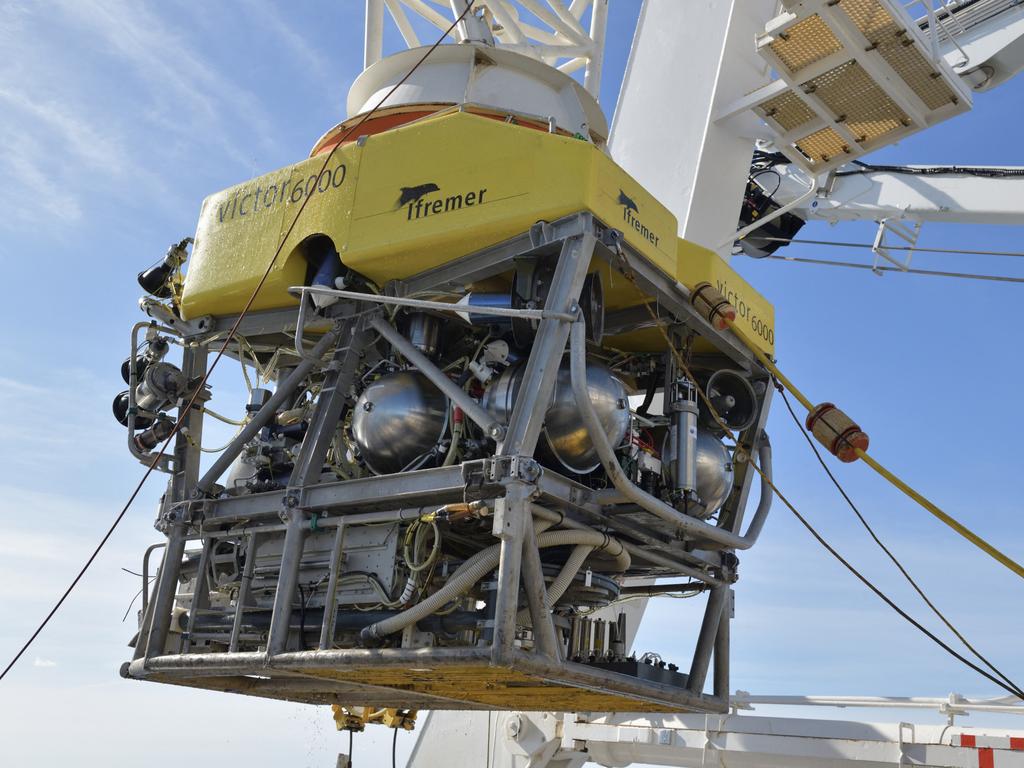
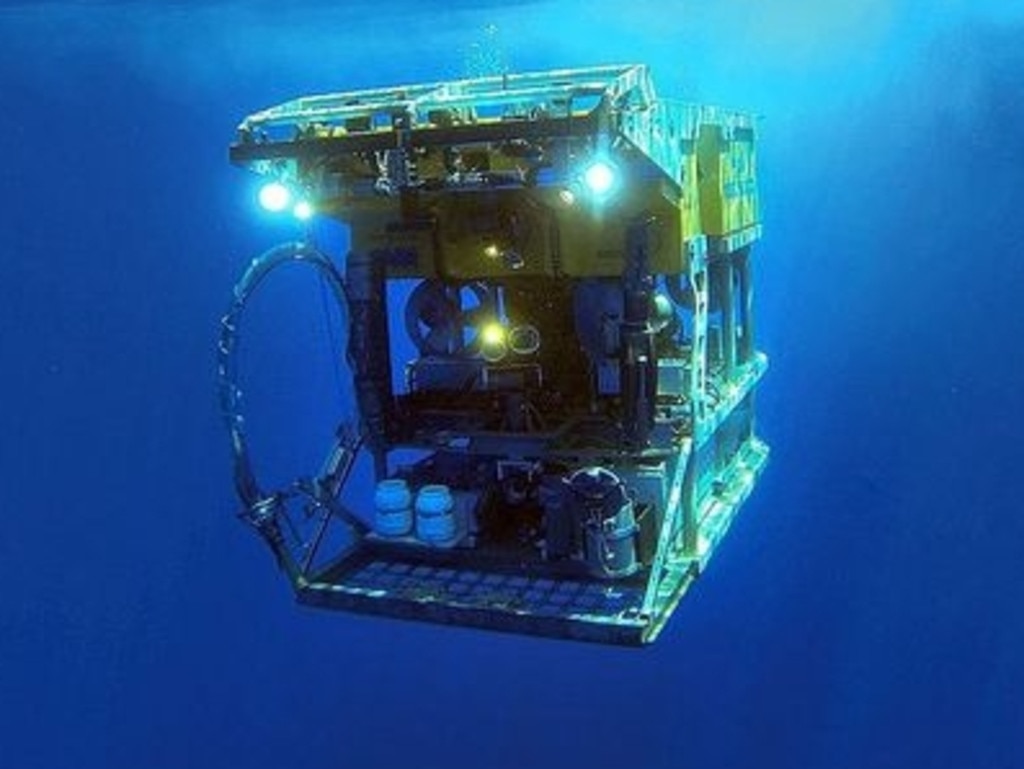
The Victor 6000, a robot able to dive 6000 metres beneath the ocean surface, is being aided by a fleet of specialised ships which also include tools that could help recover Titan if it is found.
The Victor 6000 submersible is carried by L’Atalante, a French ship which is currently close to the location of the Titan’s dive site.
The Odysseus 6k, a remote-operated vehicle which can plunge to depths of 6000 metres, is also involved in the search.
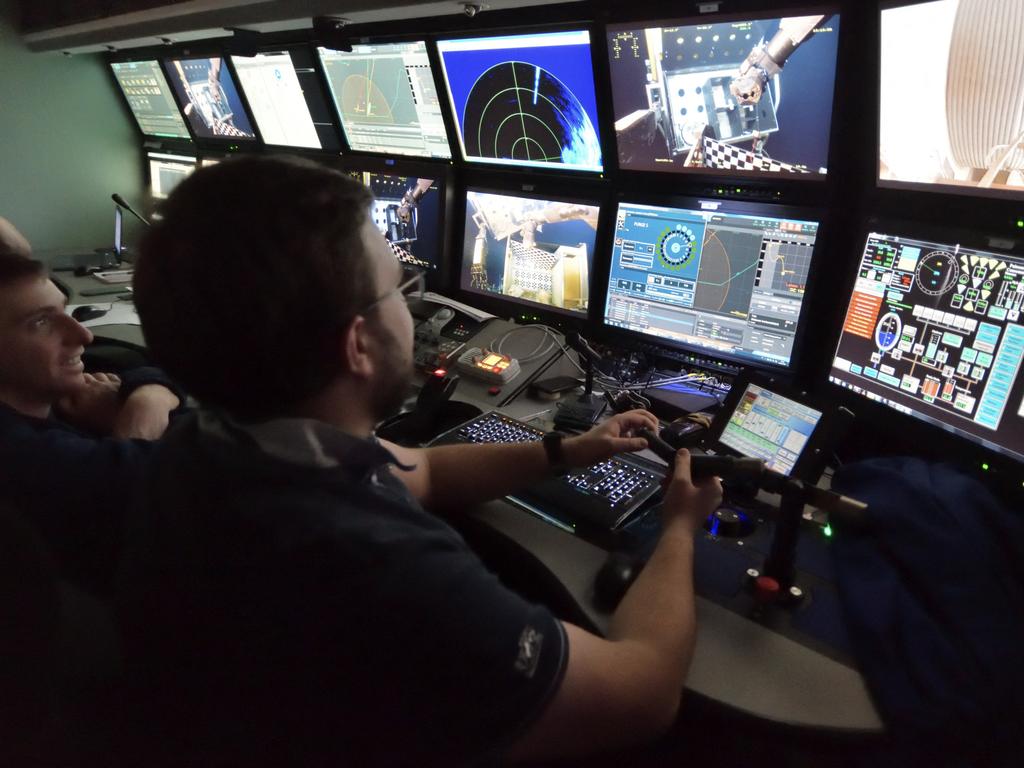

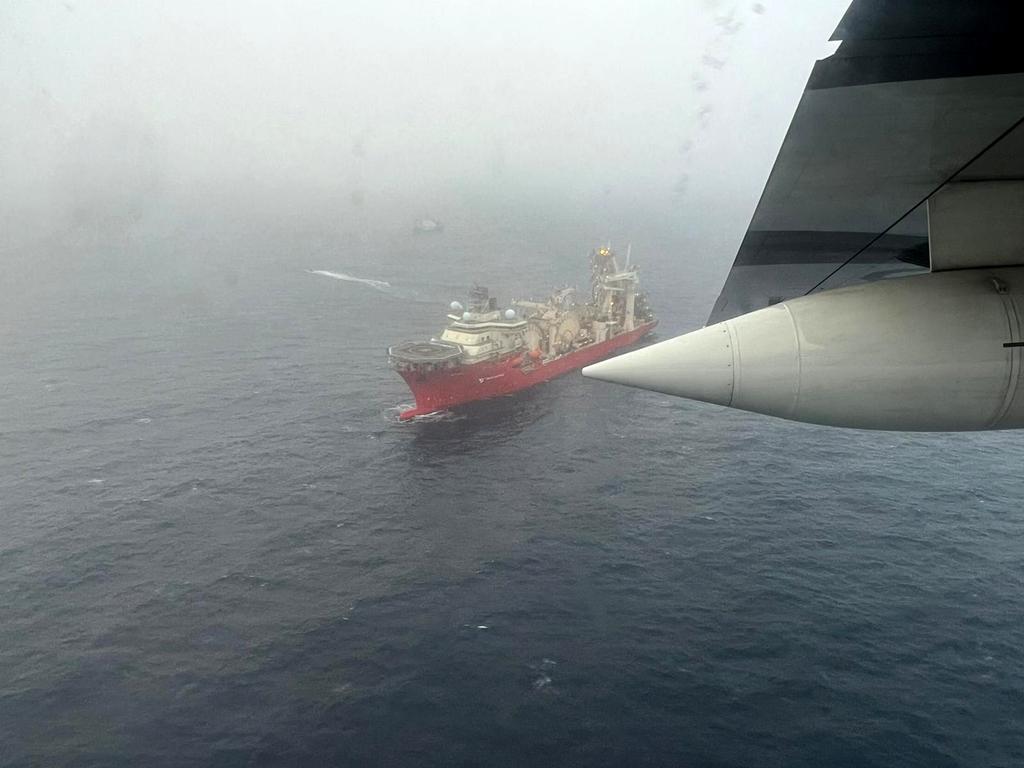
Operated by the California-based Pelagic Research Services, the vehicle is equipped with two hydraulic arms and is believed to have been sent to the search site.
US Coast Guard chiefs have said they expect more submersibles to arrive within the coming hours.
The French submersible Nautile, also deployed by L’Atalante, has made several previous trips to the Titanic wreckage.
It is also fitted with robotic arms and could also help with the search although its role has not been confirmed.
Aircraft have also played a key role in the operation, with a Canadian P-3 detecting the “banging” sounds that have become the focus of the search.
OPERATION ‘COULD TAKE TWO MONTHS’
The Titanic submersible passengers could already be dead from a lack of oxygen even if they have managed to resurface, an ex-commanding officer of a submarine has said.
Andy Coles said the passengers may well have died from hypothermia or carbon dioxide poisoning already and it could take two months to retrieve the vessel if it was located.

“I don’t think the submarine has any means of cleaning out the CO2 and recirculating the air,” he told The Mirror.
“So they will probably go to sleep way before they don’t fully suffocate. The other thing to also consider is 3,800 metres down, it’s incredibly cold.”

He said even if the submersible could reach the surface, it could not be opened immediately as it is bolted shut from the outside.
“I would say you’ve got less than 50 per cent chance of bringing them up alive, even if you found them,” he told The Mirror.
“You might be able to get them up in the future. You know, in two months’ time, you might get the lifting kit there, everything you need in place.”
Meanwhile, Elon Musk has still not made an official statement on the missing vessel after it emerged OceanGate Expeditions tweeted a shout-out to the billioniarei’s Starlink satellites earlier this month.
OceanGate tweeted that Starlink helped the company with its exploration operations in the middle of the ocean.
It is unknown whether Starlink played any role in the Titan’s loss of communications or if it was used on the doomed mission.
NEW SIGNALS KEEP HOPE ALIVE
Newly-detected undersea noises heard on the final morning of remaining oxygen supplies have kept a sliver of hope alive for the rescue of the Titan submersible.
The US Coast Guard revealed “undersea noises” first detected in the vicinity of the sub’s last known location were again heard overnight on Thursday Australian time, causing the massive rescue effort to divert its attention to the area of the “banging”.
“With respect to the noises, specifically, we don’t know what they are, to be frank with you,” Captain Jamie Frederick of the US Coast Guard said. “The good news is we’re searching in the area where the noises were detected.”
Audio data from a Canadian P-3 aircraft has been shared with US Navy experts for further analysis, but the results have so far been “inconclusive”, Mr Frederick added.
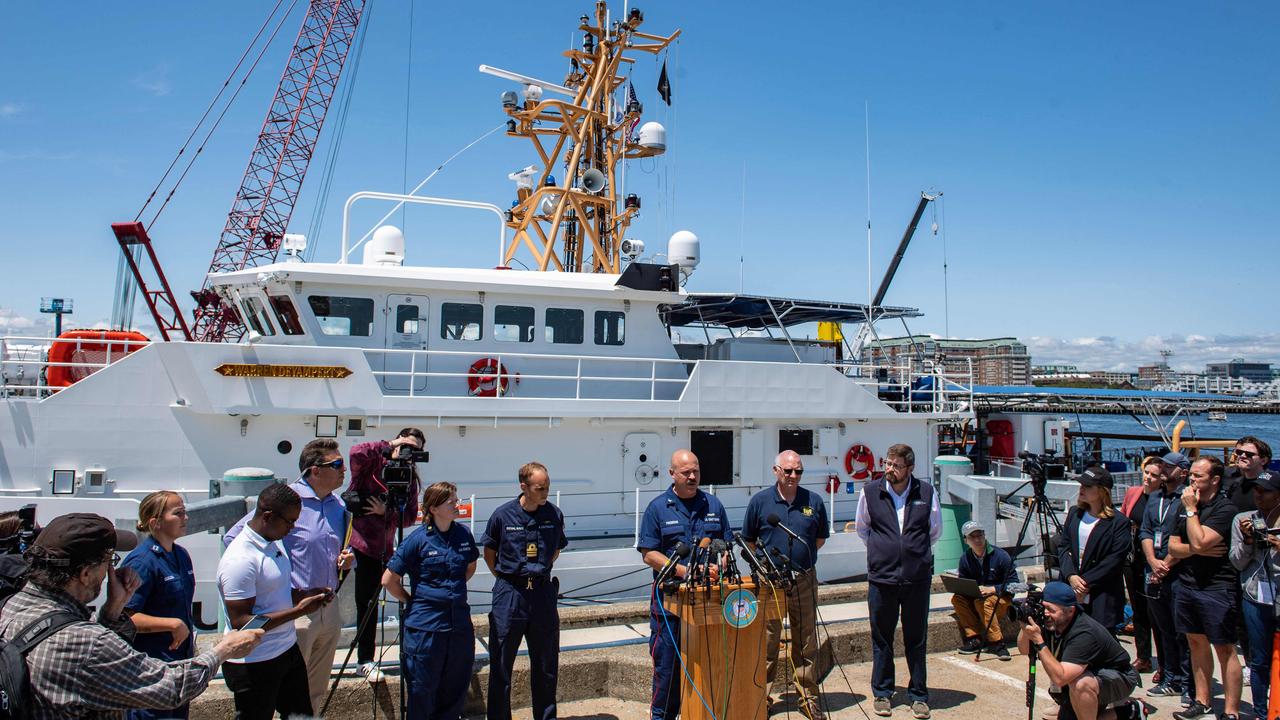
Carl Hartsfield, of the Woods Hole Oceanographic Institution, said the multiple reports of noises have been described as “banging”, and each is being “analysed, tracked, looked at for patterns”.
“They have to put the whole picture together in context and they have to eliminate potential man-made sources other than the Titan,” he said.
“There are biological sounds that sound man-made to the untrained ear … There are a lot of vessels in the area and they each make noise. All of those need to be eliminated.”
The five missing people aboard the stricken sub also have a limited supply of water and food rations, the US Coast Guard said.
Richard Garriott de Cayeux, the president of the Explorers Club, founded by missing British businessman Hamish Harding, said in a letter “there is cause for hope, based on data from the field — we understand that likely signs of life have been detected at the site.”
Also on-board the sub is Pakistani businessman Shahzada Dawood and his son, Suleman, French explorer Paul-Henri Nargeolet, and OceanGate Expeditions CEO Stockton Rush.

Rescue efforts have so far been hindered by the depth of the Titanic wreckage, which lies about 3,800 metres below the surface off the east coast of Canada.
While time is running out to discover and retrieve the missing submarine, the US Coast Guard said the mission is still search and rescue and that they would continue the efforts regardless of the amount of oxygen left in the vessel.
“The oxygen, that’s just one piece of data. There are a lot of pieces of data,” Mr Frederick said. “We’re continuously looking at that.. but that’s not the only thing that’s important.”
He said that five rescue vessels were expected to arrive anywhere between 24 to 48 hours, potentially after the emergency supplies of oxygen run out.
“Sometimes you’re in a position where you have to make a tough decision,” Mr Frederick said of whether the search and rescue mission would become a recovery effort.
“We’re not there yet.”
GRIM OUTLOOK AMID TITAN SEARCH
The five people aboard the stricken Titan tourist submarine may be doomed to a watery grave, with the US Coast Guard revealing on Wednesday, Australian time, that the rescue could be impossible even if the pod was located.
An international armada of high tech civilian and military ships and aircraft has failed to pick up any sign of the submarine lost as it descended to the site of the Titanic shipwreck, with its crew and passengers expected to run out of oxygen by later today.
The Titan lost contact, through pings and texts, with its mother ship the Polar Prince an hour and 45 minutes after descending to reach the Titanic, 3,800 metres below the surface on Sunday.
“This is a very complex search and the unified team is working around the clock,” Captain Jamie Frederick of the US First Coast Guard said on Wednesday, as he confirmed estimated oxygen levels would run out Thursday Australian time.
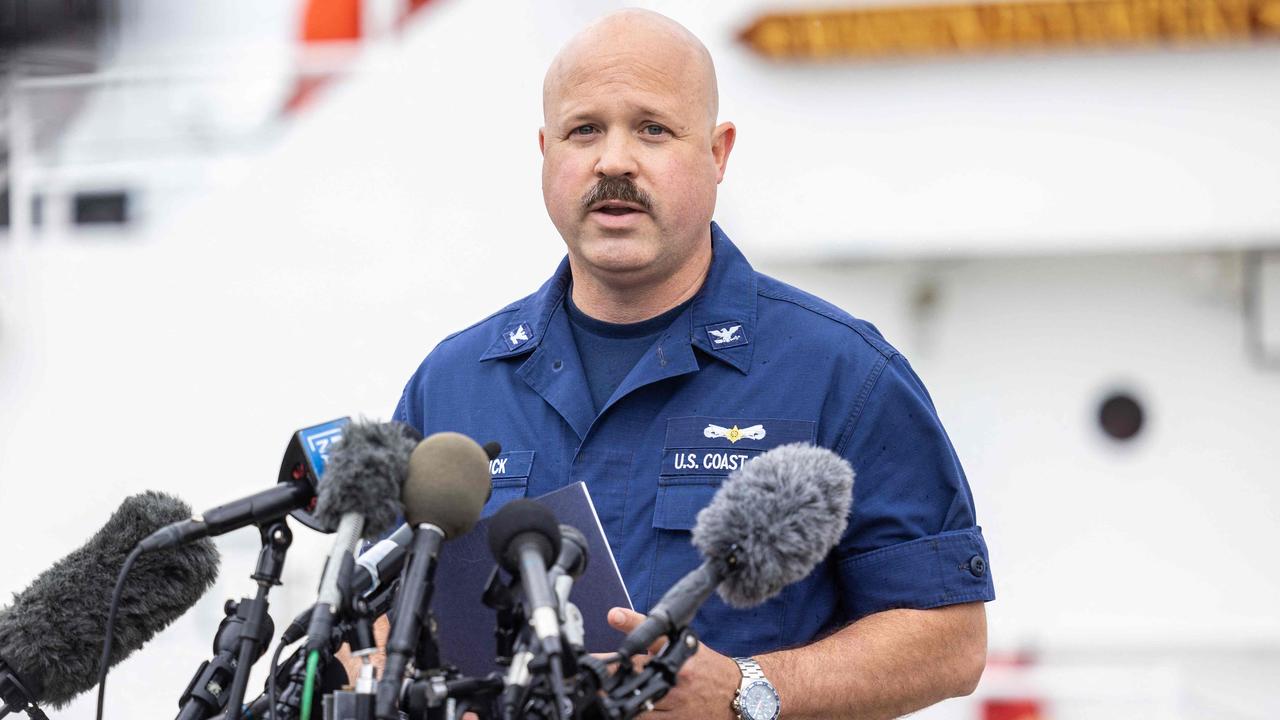
Even if the submarine, operated by OceanGate Expeditions, is located there is still no craft capable of retrieving it – meaning the Titan is doomed to a watery grave.
David Mearns, a deep-sea shipwreck hunter who is friends with Mr Harding and Mr Nargeolet, said it was not clear the tapping sounds reportedly picked up in the water came from the craft.
“Now they’ve got sonar buoys out there, there may be some other hydrophones that the mothership the Polar Prince had in the water,” Mr Mearns said.
“It’s hard to imagine how they could have heard that but still, they are at least trying to operate or encourage the rescue efforts to continue on and to be redoubled on the fact that they’ve heard something which suggests that the men are alive in the submersible.”
Questions have been raised about the safety of the Titan.
David Lochridge, OceanGate’s former director of marine operations, claimed in a 2018 lawsuit for unfair dismissal filed in the Washington State District Court he was sacked after flagging concerns about the company’s alleged “refusal to conduct critical, non-destructive testing of the experimental design”.
Lochridge reportedly “identified numerous issues that posed serious safety concerns” but he was allegedly “met with hostility and denial of access” to necessary documents before later being fired.
The document claims he became concerned about a “lack of non-destructive testing performed on the hull of the Titan”, and that he “stressed the potential danger to passengers of the Titan as the submersible reached extreme depths”.
“The paying passengers would not be aware, and would not be informed, of this experimental design, the lack of non-destructive testing of the hull, or that hazardous flammable materials were being used within the submersible,” his filing stated.
The case was settled in November that year after the Marine Technology Society also raised similar concerns about Titan and “catastrophic” worse case outcomes stemming from its design.
The submersible had seven backup systems to return to the surface, including sandbags and lead pipes that drop off and an inflatable balloon that can activate even if the crew is unconscious.




